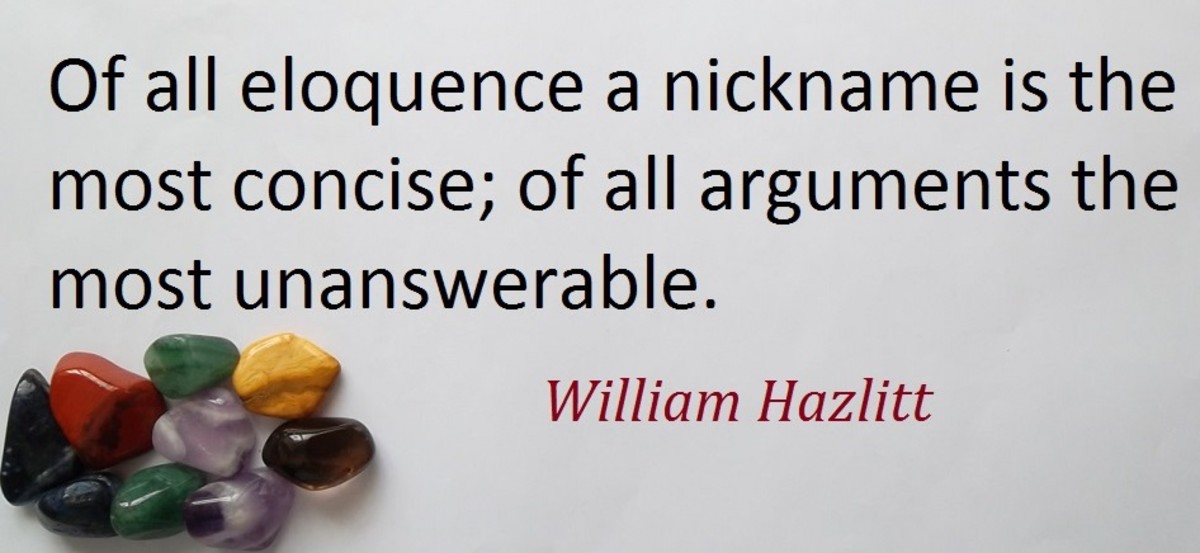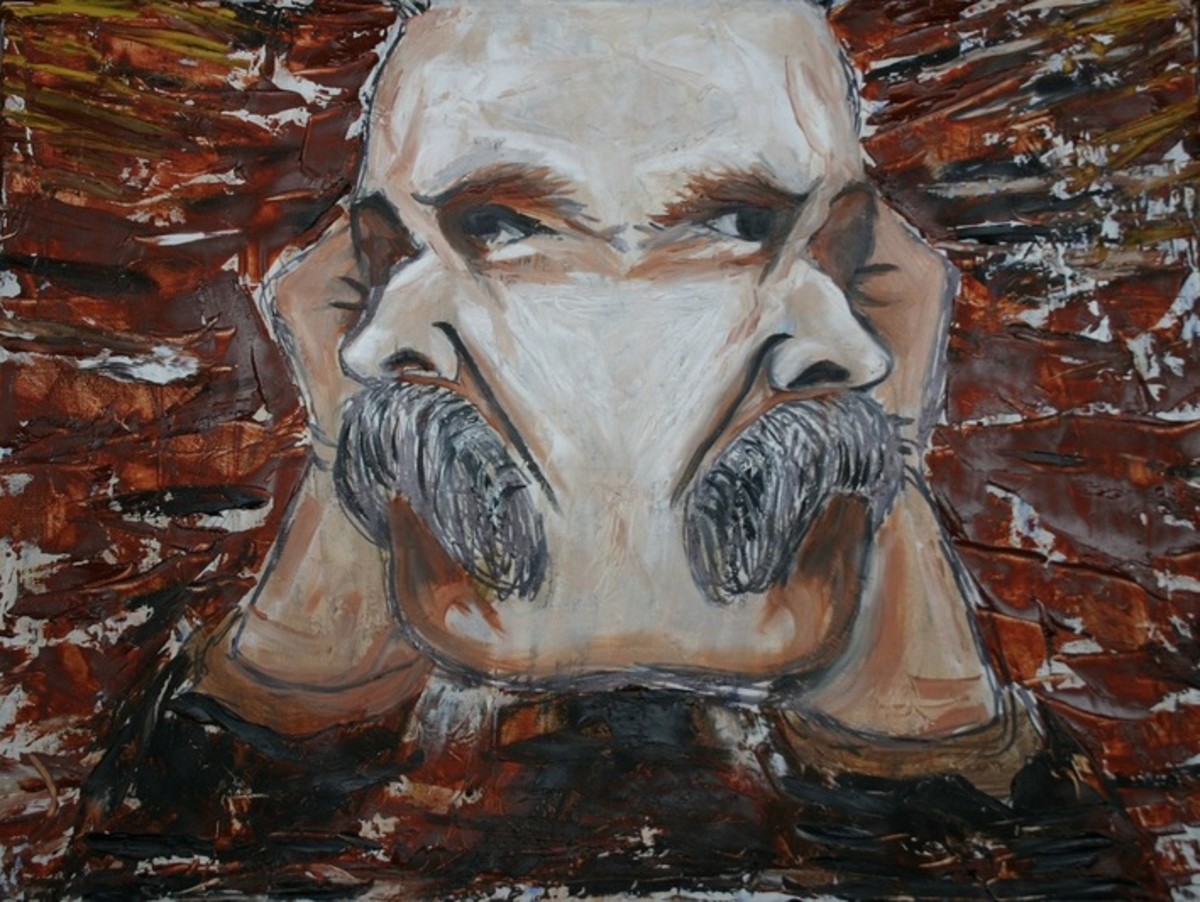Rational Succession of Mental States as Constitutive of Personal Identity?
The problem of personal identity is, what makes a person the same person over time. Due to the numerous changes one endures over a lifetime, there is good reason to question whether there is such a thing as a persisting self over time. Though there have been many different answers to the question of personal identity, there has emerged a consensus on one important aspect to personal identity: “what matters in survival is mental continuity and connectedness” (see David Lewis). In other words, it is generally believed that a person is the same person over time so long as there is some sort of continuity and connectedness between her mental states. However, continuity and connectedness can amount to different things, depending on the theory put forth. A recent theory that adopts a type of mental continuity and connectedness as its basis is Duncan MacIntosh’s personal identity theory. MacIntosh argues that rational succession of mental states is constitutive of personal identity. In this essay I will argue that rationally succeeding mental states is a necessary, though not a sufficient, condition for personal identity. I argue that a personal narrative or a “sense of self” is a necessary (though not sufficient) aspect to personal identity. First, I outline the main tenets of the received view of personal identity. Second, I outline MacIntosh’s rejection of these tenets. Third, I discuss the importance of narrative to personal identity and respond to possible criticisms of this view.
Persons are essentially a series of mental states, which consist of things such as beliefs, desires, and emotions. According to the received view of personal identity, there are five necessary relations between mental states that must be met in order for mental states to be considered states of the same person over time. They are:
1) similarity of successor states to immediate predecessors;
2) gradualness in such change of mental states as may occur;
3) non-extreme overall change between earlier mental states and non-adjacent successor states where change may occur;
4) lawful causal dependence of successor states on immediate predecessor states; and
5) continuity—if the same person exists earlier and later, it must exist at all times in between (MacIntosh).
At first glance it seems reasonable to think that the above relations between mental states are important to personal identity, however, let us look at them more closely to evaluate their appropriateness in constituting personal identity over time.
The first condition for personal identity is that there be similarity in current mental states to immediate predecessor states. This condition is considered important for personal identity because it is often the case that a person’s beliefs and desires from one moment to the next ordinarily have some resemblance to one another. For example, I believe that I am a young Canadian male, living in Halifax, Nova Scotia. However, if I move from Halifax, Nova Scotia, to Digby, Nova Scotia, my beliefs change in the relevant ways according to the changing facts. So now that it is a fact that I live in Digby, Nova Scotia, I believe that I live in Digby, Nova Scotia, but my beliefs about being a male, and living in Canada have not changed. Hence there is a resemblance in my current mental state to my previous mental state; that is, there is not a complete dissimilarity between my current mental state and the mental state that preceded it. However, consider what it would mean for my beliefs not to resemble one another. Suppose my beliefs were to change radically from one mental state to the next, such that at one moment I were to sincerely believe that I were in Canada, the next moment, in the US, the next moment a women, after that, an old man; observers might be inclined to think that I was no longer myself, due to the fact that my succeeding mental states did not resemble one another. These observers might rightfully think that I had somehow been taken over by several different persons, whose thoughts and beliefs were all trying to come forward at once. So there does seem to be some reason to think that resemblance in successive mental states is important to personal identity.
The second condition for personal identity is gradualness in change between mental states. Let us consider an example to see what is meant by gradualness in change between mental states. Suppose John is a devout Christian. From early childhood John has been taught that God exists, and he strongly believes this. If John’s belief in the existence of God eventually does change, this belief will not likely change quickly. For example, John will not at one moment, strongly believe that God exists, then upon hearing a good argument against the existence of God, cease to believe in the existence of God. John’s belief in the existence of God will likely be strong enough such that one argument will not likely immediately change his belief. However, once John has had time to consider the force of this argument, and perhaps subsequent arguments, he may eventually come to change his belief in the existence of God. Many deep-seated beliefs such as this do not generally change too quickly because such beliefs are often considered to be an integral part of who we are (MacIntosh, p. 38). But suppose now we were to hear John at one moment say that he was a devout Christian, two minutes later, say he was a devout atheist; we would have some reason to think that we were no longer talking to the same John. For the John that we know is a devout Christian, and the John who is before us now is a devout atheist. So we see from this that a person’s mental states cannot change too quickly without some threat to personal identity.
The third condition for personal identity is that there not be too much change overall in one’s mental states over time. This condition refers to the fact that over the course of one’s life, it would be difficult to call Sally the same person over time if Sally used to be the type of person who always told the truth, but now always lies; always helped her neighbours, but now shuns all social interaction; had a terrible sense of humour, but now has a great sense of humour; was once kind to animals, but now is cruel; was not too bright, but is now incredibly intelligent, and so on. If there is too much radical change in the life of one person, we might be justified in saying that Sally is not one persisting person at all; we might say Sally is not the same Sally over time. This example is meant to show that we tend to think that people ought not to change too drastically over time if they are to remain the same person.
The fourth condition for personal identity is lawful causal dependence of successor states on immediate predecessor states. This condition refers to the fact that there is often a causal connection between one mental state and the next, such that my current mental state logically leads to my next mental state. For example, I am currently in a mental state of hunger. Now I am in a mental state of believing that if I eat, I will satisfy my hunger. Now that I have eaten, I am no longer in a mental state of hunger because I have satisfied my desire to eat. I have logically moved from one mental state to the next. But consider if I am at one moment in a mental state of desiring to eat, the next moment, I desire to start driving on the left side of the road, the next moment I am no longer in a mental state of desiring to eat. There is no logical connection between my mental states. And if I were to continue to have such disconnected mental states, it would be difficult to identify a persisting self over time, due to the irregularity of the succession of mental states.
The fifth condition for personal identity is continuity between mental states. By continuity, we mean that there can be no breaks in one’s mental stages, there must be some sort of link between mental states if a person is to persist over time; one cannot be one’s self, and then cease to be oneself, then continue again to be one’s self, as might occur in cases of fission or fusion. Once continuity is lost, identity is lost. If the same person exists over time, it must be possible, at least theoretically, to track the succession of mental states, such that there be continuity between them.
While there is a general consensus on the above-mentioned conditions of personal identity, the received view is not without its critics. Recently, Duncan MacIntosh has criticized many of these so-called necessary relations between mental states, and has put forward his own theory of personal identity. In “Readings on Rationality and Personal Identity,” MacIntosh argues that a person persist over time only if there is a rational succession between successive mental states. Hence, for MacIntosh, it is not resemblance between successive mental states that constitutes personal identity, but rather it is rationality that is important for preserving identity. As MacIntosh says, I survive “…if the [mental] states of some later person-stage [] are those I should rationally have entered given my current states and new experiences…” (pp 4-5).
MacIntosh takes issue with the fact that, on the received view of personal identity, successive mental states must be similar to one another. As MacIntosh rightly points out, persons can undergo rapid, radical change in mental states without identity loss; in fact, rationality sometimes requires rapid, radical change in mental states (pp 2-3). For example, if I look out the window and I see that it is raining, I am in the mental state of believing that it is raining. However, if I look out the window a minute later and see that it is no longer raining, I am rationally obliged to change my beliefs to a different mental state than I was previously in; however, there is no good reason to think that these mental states are states of two different people. We can rationally account for the change between these mental states by pointing out that the environment changed, and so our beliefs about the environment changed accordingly. Hence, rationality, and changes in our environment, sometimes requires non-resemblance between successive mental states. MacIntosh goes even further by saying that to require resemblance between mental states might actually threaten one’s identity: “[t]o require resemblance between people’s earlier and later mental stages, then, would be to require that people’s psyches not undergo rationally required changes. But surely losing the dispositions so to change would itself threaten one’s ongoing identity” (p .3).
As for condition two on the received account, MacIntosh first points out that if resemblance is not necessary between successive mental states, then there is no longer any reason to think that there need be gradualness in change between successive mental states. In other words, if we allow personal identity to persist through radically different successive mental states, why think these radical changes must be gradual? Once we see that the requirement for resemblance between mental states is unnecessary in preserving identity, we also see that it is unnecessary to require gradualness in change between mental states in preserving personal identity. MacIntosh provides the following example to make his point:
If I check my math to decide whether to keep thinking x is the sum of y and z, should my check prove me wrong, I needn’t only slowly acquire the correct belief, lest I risk my survival. I needn’t wait an hour before changing my belief. And suppose I thought the sum was 20, but it is really 30: neither must I think for a bit that it is really 21, then 22, then 23, etc., only gradually…working my way to the belief that it is really 30 (p. 22).
I think this example is quite effective in demonstrating that it is not necessary for change in mental states to be gradual in order for persons to survive. There are, of course, many examples one could give where change between mental states is non-gradual, yet identity persists. We saw non-gradual change in the above example of the person looking out the window watching the rain: there, one’s environment changed, which in turn required one’s beliefs to change, however, because there was a rational link from one mental state to the next, there was no need to think that the sudden change in mental states threatened identity.
Regarding condition number three on the received view, MacIntosh argues that there is no threat to personal identity simply by extreme overall change in one’s life. As MacIntosh says, “…if a lot of little changes can be justified, they can add up to a lot of justified change overall” (p. 39). What is important in maintaining identity is that there be a rational link between one mental state and the next. Let us consider again the example I gave above about the life of Sally. Sally was originally the type of person who always told the truth, but now always lies. But Sally survives so long as there was a rational succession in mental states that lead Sally to be the type of person that always lies. Perhaps Sally realized that she is good at lying, and can maximize her individual expected utility by not telling the truth. Furthermore, if Sally were formerly the type of person who was not too bright, but is now quite intelligent, this too, is no threat to her personal identity so long as there was a rational succession between her mental states. Maybe Sally thought she could accomplish more of her goals if she went to university and got an education (maybe she went one step further and majored in philosophy). Thus, if a succession of mental states are rationally linked to one another, we can allow for extreme overall change over time without any threat to identity.
As for condition number four, MacIntosh agrees that lawful causal dependence of successor states on immediate predecessor states is central to the notion of personal identity. On MacIntosh’s view, being in a mental state “…is being in a dispositional state. And the identity of such a state is given in what tends to cause it and what it tends to cause…” (p. 5). We see instances of this causal relationship between successive mental states in much of our beliefs and actions. For example, if I observe that it is raining outside, this causes a belief in me that it is raining outside. If I am rational, this belief that it is raining outside, coupled with a desire to stay dry, causes me to put my rain jacket on. Much of our mental life relies on this lawful causal dependence between mental states, and so long as there is a rational link between these mental states, persons survive.
Concerning condition five, MacIntosh agrees that continuity must exist between mental states in order for personhood to persist, but as we have seen, he does not believe that the link between mental stages is resemblance; rather, it is rationality (pp 2-3). So now that we have reviewed the received view of personal identity and MacIntosh’s criticism of that view, let us now consider some potential objections to MacIntosh’s view.
One difficulty with MacIntosh’s view is that it would seem that persons whose mental states are not rationally linked are not persons at all. Indeed, MacIntosh defines a person as something that does or can have mental states, and also has a rational connection between these mental stages (p.3). However, I am inclined to argue that sometimes my mental states are not made up beliefs and desires, but simply perceptions, and I move from one mental state of perception to another. But if I am moving from one mental state of perception to another, I am not being rational or irrational in my succession of mental states, I am non-rational; for it would seem that rationality has no part to play in a succession of mental states made up solely of perceptions. So, for example, when I am relaxing from a hard day’s work I might simply choose to look out the window and not think at all. My succession of mental states can be made up of one perception after another: First I watch the cars go by, then my attention is focused on a bird that lands in a nearby tree, then I see a person walking by, and so on. Have I ceased to be me simply because my successive mental states are not rationally linked? Or is there a rational link between successive mental states of perception?
MacIntosh does address this type of worry late in his paper when discussing absence of change in person’s mental states. MacIntosh seems to indicate that he would allow some stasis in mental states to exist without identity being threatened, however, part of what makes a person a person is that there be change in mental states. As MacIntosh says, “…change is integral to the identity of things of the kind, person: if a person fails too much to change when she should change, she ceases to be that kind of thing, the person kind” (p. 62). But it is not clear how much non-rational activity (or overall inactivity) between mental states is allowed before identity is threatened, nor is it clear whether MacIntosh would include perceptual states as types of mental states that are able to be rationally linked.
A second worry with MacIntosh’s account of personal identity is that persons seem far removed from real persons; they are, in fact, reduced to nothing other than rational decision-makers. But surely personhood has something to do with that internal dialogue, that internal story that we tell ourselves about the type of person we are. I would argue that personhood has to do, at least in part, with that qualitative feeling we each have towards our beliefs and desires. For when I reflect on myself I find that I am not the kind of person that would steal from others; I am not the kind of person that would kill another human being; I am not the kind of person that intentionally deceives others. These qualities of my character make up an important part of who I consider myself to be.
MacIntosh’s response to the above position is to say that rationality sometimes requires one’s character traits to change in accordance with one’s changing environment, however, there is no reason to think that identity changes along with changes in character traits. According to MacIntosh, so long as our mental states are rationally linked throughout these changes in character, a person survives. So I might, for example, rationally choose to become the type of person that steals if there was a state of anarchy in the world, and the only way to get by were to steal. Similarly, if I were in a war, I would kill another human being if it meant that I could live. Likewise, I could become quite accustomed to deceiving others if I discovered that I could better serve my interests by doing so. According to MacIntosh, so long as the transition from one mental state to the next were rational, I am properly considered a persisting person. But I would argue that after all of these changes in my character, I would not likely recognize myself as myself: For once I was once the type of person who never stole, now I steal; I was once a person who would never kill, now I kill; I was once the type of person that never intentionally deceived, now I wilfully deceive. It would seem that in some sense I am not the same person now that I was before. I am not recognizable to myself as myself, nor would others likely recognize me as myself. It may be true that I am numerically the same, but I am not qualitatively the same. And even though I can remind myself of the rational succession of mental states that lead to my current mental state, I still do not feel as though I survived the changes.
MacIntosh’s reply is to point out that it is paradoxical to say that you might no longer recognize yourself as yourself. After all, the only way you could fail to recognize yourself as yourself is if you still exist (p. 31). But my response to this is that all I am now is a succession of rational mental states; I am no longer a person. This, of course, is not problematic to MacIntosh because, on his account, persons are nothing other than a rational succession of mental states, and when mental states are rationally linked, a person can be said to persist. But even though I may be considered a person, on MacIntosh’s account, I certainly do not feel as though I am the same person.
Even though MacIntosh explicitly denies that one need to think of one’s self as a persisting self in order for an identity to exist, (p. 31) he does seem to imply the importance of a sense of self. If we consider Macintosh’s discussion of rational forgetting, we see that a person can forget large amounts of her past, yet her identity survives (p.50). This identity is possible only if we rationally forget: we choose to forget unimportant things, like what I had for supper December 1, 2005, or some of my old postal codes; but we choose to remember important things like the hometown we grew up in, the names of our parents and siblings, etc. But I wonder if MacIntosh would say that we only rationally forget the things that are not important to our sense of self? If so, this would seem to imply that maybe there is something to the narrative account of self. We try to retain certain memories that we consider important to our notion of self. In any event, I doubt MacIntosh would admit that the reason we remember important events is so that we might retain our sense of self, rather, it likely has more to do with preserving our capacity to maximize our interests.
In the end, I think that my criticism against MacIntosh’s view centres on his definition of a person. I cannot accept that persons are simply those things that have a rational succession of mental states. For me, personhood would have to acknowledge the importance of a sense of self, otherwise the definition of person is inadequate.
In summary, I began by outlining the received view of personal identity, which consisted of identifying continuing persons as those whose mental states shared a resemblance to one another. Then I outlined MacIntosh’s position on personal identity and offered his objections to the received view of personal identity. Finally, I provided criticisms against MacIntosh’s view, and gave reasons for thinking that a narrative was an important part of personal identity.
Bibliography
David Lewis, “Survival and Identity,” in Daniel Kolak and Ray Martin (eds.) Self & Identity: Contemporary Philosophical Issues (New York: Macmillan Publishing Company, 1991).
Duncan MacIntosh, “Readings on Rationality and Personal Identity,” unpublished manuscript, Dalhousie University, 2001.








